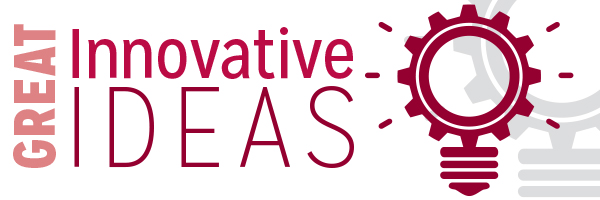Autonomous Agents in the Wild: Human Interaction Challenges

Laura Major, Vice President of Engineering at CyPhy Works
The following Great Innovative Idea is from Laura Major, the Vice President of Engineering at CyPhy Works. Major was one of the Blue Sky Award winners at the International Symposium on Robotics Research (ISRR 17) in Puerto Varas, Chile for her paper, Autonomous Agents in the Wild: Human Interaction Challenges.
The Idea
Autonomy is moving into commercial applications, where it is being encountered by untrained, unfamiliar consumers. These individuals, with little exposure to autonomy or its principles, will be using advanced automation to perform safety-critical tasks such as driving their cars or flying video-capture drones. While advanced automation has been applied in industrial applications for decades, with experts using it to monitor and control highly complex systems, including large jets and nuclear power plants, the new population coming into contact with autonomy does so with little knowledge of autonomy’s limitations. Therefore, the advances made in the industrial application of autonomy must be understood, leveraged and extrapolated into the design of commercial systems that use autonomous agents to perform these safety-critical tasks. These lessons-learned must inform the implementation of consumer-destined autonomous systems to avoid serious, adverse outcomes.
Impact
Commercial products have traditionally focused on user experience and preference, optimizing the design around user delight. However, the goal of delighting users is often in conflict with that of providing them with the right information at the right time, to enable them to appropriately interact with an autonomous agent. With safety-critical tasks, the user must have enough information to predict and compensate for any system or logic failures which will inevitably occur. This concept should change the way autonomous agents are designed, and the ways in which users interact with them. Maintaining optimal user experience without diminishing awareness while using safety-critical commercial products will make those products safer for all who come in contact with them.
Other Research
I am currently working on tethered, multi-rotor, unmanned aerial vehicles (UAVs). The tether provides continuous power and communication, enabling unique missions including flights that last for days or weeks; and full exploration of indoor environments. These systems require a high level of autonomy due to their extended mission durations. In addition, they provide large volumes of data suited for surveillance, security and indoor inspection activities. However, large amounts of data are only useful if a person can quickly extract pertinent information when needed. My work at CyPhy focuses on designing automated solutions that minimize user interaction while ensuring both safe operations, and rapid access to mission information.
Researcher’s Background
I have an Aerospace Human Factors background and have spent my career designing a variety of complex automation solutions for industrial applications including the management of military battlespace awareness, embedded sensor systems, and big data analytics. I developed a Human-Centered Engineering capability at Draper, expanded it to include the integration with Machine Intelligence and Big Data Architectures, ultimately leading a Division of 100 engineers. I am now the Vice President of Engineering at CyPhy Works leading the technical development of new features to for the PARC™ (Persistent Aerial Reconnaissance and Communications) tethered, unmanned air vehicle, and for other new UAV capabilities.










